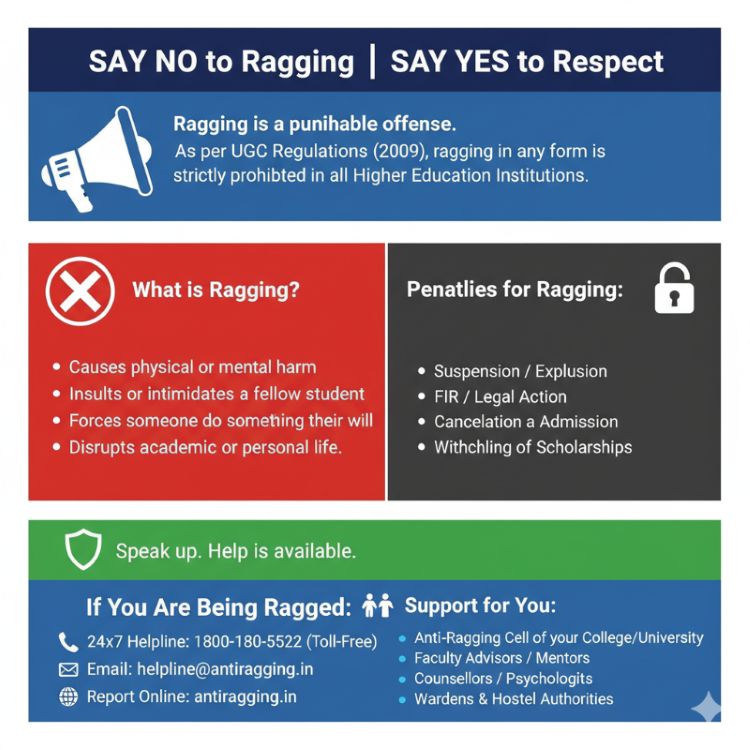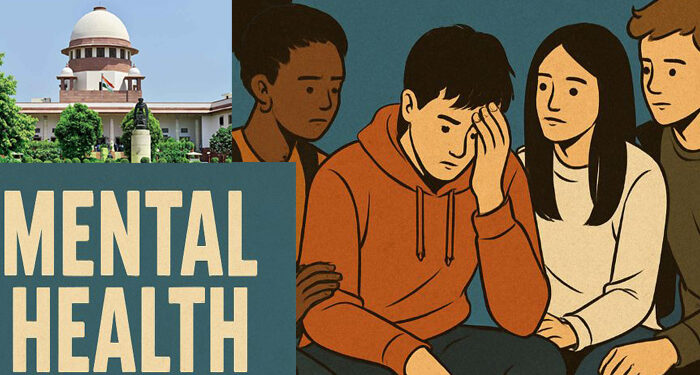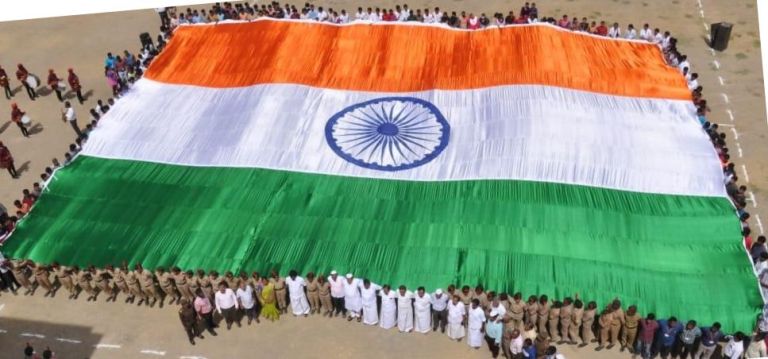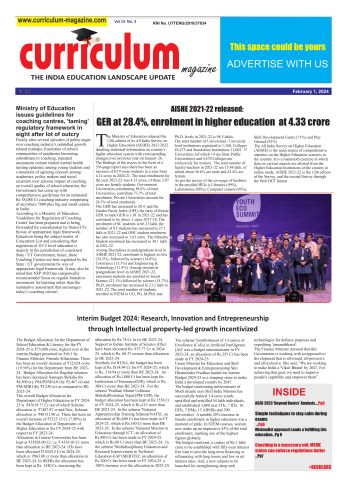As per the latest data from the National Crime Records Bureau (NCRB), India recorded 1,70,924 suicide cases in 2022—an increase from 1,64,033 cases in 2021—of which approximately 7.6% (13,044 cases) were student suicides. The number of student suicides per year has more than doubled over the last two decades, from 5,425 in 2001 to 13,044 in 2022. Among female suicide victims, the highest number (25,309) were housewives, followed by students (6,113). The most vulnerable age groups were 18–30 years and 30–45 years. “Failure in Examination” (1.2%) and “Drug Abuse/Alcoholic Addiction” (6.8%) emerged as key causes. Among children under 18, “Love Affairs” (1,578 cases) and “Illness” (1,292 cases) were cited most frequently.
Between 2019 and 2023, 98 student suicides were reported in central higher education institutions (HEIs). In 2022–23 alone, the IITs reported 11 student suicides. Medical colleges reported 122 suicides and 1,166 dropouts due to ragging during the same period. Of the 33,979 student dropouts from central HEIs between 2019 and 2023, 48% belonged to SC, ST, and OBC communities.
In a powerful recognition of the growing toll of student distress, the Supreme Court has initiated legal and policy response to curb the alarming rise in student suicides. In course of the past four months the highest court of the country while reiterating mental health as an integral component of the right to life under Article 21 of the Constitution of India, has setup a National Task Force on mental health concerns in students and followed it up by issued binding guidelines for all education institutions.
The Court on March 24, 2025 while deciding the case of Amit Kumar & Ors. Vs Union of India & Ors. (Criminal Appeal No.1425/2025—The case pertains to suicide of two IIT Delhi students in 2023 where the police didn’t conduct investigation into the cases under needed sections and therefore abetment causes were not investigated), ordered framing of a National Task Force (NTF) to discuss and deliberate on issues related to mental health concerns among students, the prevention of suicides in educational institutions, and to recommend preventive measures. The 10-member NTF headed by former Supreme Court Judge, Justice S. Ravindra Bhat and including members from diverse fields is to propose necessary reforms to the existing legal and institutional frameworks to ensure stronger enforcement, accountability, and preventive measures. To ensure an interdisciplinary approach to tackling the issue of commission of suicides in HEIs, senior officers of secretary level from four ministries (Department of Higher Education (MoE), Department of Social Justice & Empowerment (MoSE), Ministry of Women and Child Development, Department of Legal Affairs, (MoLJ), have been included in the Task Force.
Then, in its Special Leave to Appeal (Crl.) No(s). 6378/2024 (Sukdeb Saha v. State of Andhra Pradesh & Ors. —Case of a 17-year-old daughter, Ms. X, at a coaching institute, namely, Aakash Byju’s Class in Vishakhapatnam, Andhra Pradesh, to prepare for NEET examination, died in July 2023 at her hostel. Parents alleged unnatural death and negligence of the system demanding CBI investigation, while as the other side labeled as suicide) judgement delivered on July 255, the Supreme Court listed 15 binding guidelines for educational institutions nationwide. Invoking Article 141, the Court declared: “These guidelines shall be read as complementary to the ongoing work of the National Task Force and would inform and assist the National Task Force in the development of a more comprehensive and inclusive framework.”
While the NTF has been given a time of eight months to submit its report, the guidelines having status of law under Article 141 have been made applicable immediately and states given two months to implement these through district level monitoring committees.
The Task Force is tasked with identification of the predominant causes including but not limited to ragging, caste-based discrimination, gender-based discrimination, sexual harassment, academic pressure, financial burden, mental health related stigma, discrimination based on ethnicity, tribal identity, disability, sexual orientation, religious belief or any other grounds, which lead to commission of suicides by students. A thorough assessment of the effectiveness of current laws, policies, and institutional frameworks and recommendations for strengthening protections are other mandates of the committee.
Among the key guidelines are directions for all educational institutions to adopt and implement a uniform mental health policy, drawing cues from the UMMEED Draft Guidelines, the MANODARPAN initiative, and the National Suicide Prevention Strategy. Those with 100 or more enrolled students shall appoint/engage at least one qualified counsellor, psychologist, or social worker with demonstrable training in child and adolescent mental health. Institutions with fewer students shall establish formal referral linkages with external mental health professionals. Also, all teaching and non-teaching staff shall undergo mandatory training at least twice a year, conducted by certified mental health professionals, on psychological first-aid, identification of warning signs, response to self-harm, and referral mechanisms. All institutions shall prioritise extracurricular activities, including sports, arts, and personality development initiatives under these guidelines.
Meanwhile in the ongoing Parliament session replying to a question on increased instances of student suicides, Dr. Sukanta Majumdar, Minister of State of the Ministry of Education on July 30 while listing Government initiatives said, “Department of Higher Education has initiated the Integrated approach for Promoting Positive Mental Health, Resilience, and Wellbeing under the Malaviya Mission Teacher Training Programme. It comprises online and in-person sessions, visits to institutions with innovative mental health practices, and an Annual National Wellbeing Conclave. The goal is to empower faculty to address student mental health concerns for early intervention.”
However, according to Prof Raj Kachroo, former professor of Water & Environmental Engineering at the National University of Ireland and founder of Amanmovement.Org, whose efforts and work on eradication of ragging following the tragic death of his own son Aman from being beaten during ragging in 2009 at Dr Rajendra Prasad Medical College Tanda (Himachal Pradesh) is well known, normalization of institutional and peer harassment is preventing the narrative around student distress being recognized in its true colors. “For every suicide, there are thousands below the threshold who suffer in silence. For every distressed student, there are thousands who are undergoing the same pain, but we fail to see it as symptom of a larger problem that our students are faced with. Most people view ragging as a kind of human violation while not paying attention to the fact that harassment and humiliation kills the creativity and ingenuity of the young minds. Nobody is disturbed by fact that student suicides are the second highest after housewives in this country. Have we ever asked, how many of them were driven to this act by external pressure than genetic predisposition?” adds Kachroo whose painstaking work brought down reported cases of ragging from an estimated 40% in 2009 to less than 5% in 2020. His organization was stripped of its role after UGC ‘corrupt’ bureaucracy fiddled with statutory norms set up by the Supreme Court and inserted tendering into running of helpline and allied components of the mechanism, which according to him has led to rise of the menace once again as the seriousness was taken out of the National Ragging Prevention Programme (NRPP) citing omission of anonymous compliant registration. He is currently fighting his case in the Delhi High Court to restore the effectiveness of anti-ragging mechanism.
 Talking about the long road for ill mental health prevention within the education institutions, Prof Kachroo who designed CALL 181 for women points out to the indifferent school space, which has been left out untouched by the ChildLine service 1098. “You’ll not find a single poster or sticker in our schools. You’re not allowing them even to know that protection exists,” he adds.
Talking about the long road for ill mental health prevention within the education institutions, Prof Kachroo who designed CALL 181 for women points out to the indifferent school space, which has been left out untouched by the ChildLine service 1098. “You’ll not find a single poster or sticker in our schools. You’re not allowing them even to know that protection exists,” he adds.
“Broken families, societal pressure, token or no extracurriculars like creative art, sports or no place to vent out their feelings, students across the board have been left to suffer, some can’t take it and others are suffering silently. The least you can do is, empower them to seek protection available under law. That in my view can trigger some sensitiveness towards the issue,” recommends Prof Kachroo clearly sees the protective anti-ragging mechanism his organization helped build weakening and thereby putting 35 million students enrolled in Indian colleges and universities at a risk.
The growing concerns over student suicides—often triggered by academic stress, financial strain, or personal struggles—reveal institutions and programs are failing. HEIs aren’t engaging professional counsellors and psychologists or involving faculty members, mentors, and wardens in providing regular mental health support. Simply said, these mechanisms are forgotten rituals or just a formality.
The University Grants Commission (UGC) regulations to protect student welfare, curb ragging, and support marginalized communities through SC/ST Cells and Equal Opportunity Cells; Ministry’s initiative, MANODARPAN, providing psychological support via helplines, webinars, and interactive sessions aren’t creating resonance within the system though it is early to draw any conclusions given the latest NCRB data released is only till 2022. For the past two and a half years, there may have been some improvement if validated by some study. However, given the regularity in the reportage of student suicides across the country, it is safe to assume that a support culture around mental health is still taking roots. Medical colleges continue to report high incidence of ragging.
The National Suicide Prevention Strategy and National Mental Health Programme offering suicide prevention services and mental health counselling in schools and colleges don’t seem to be visible and creating impact on ground. The launch of Tele MANAS and its mobile app has expanded access to mental health services across 767 districts may be a good initiative to connect with younger generation. Peer-assisted learning and technical education in regional languages also sounds good to cope with academic pressure and marginalization.
Conclusion
The Supreme Court’s intervention, while timely, is only the beginning. The deep-seated cultural, social, and institutional failings that burden India’s students demand a sustained, multidisciplinary effort. Mental health cannot remain a footnote in the policy handbook—it must be embedded in the very architecture of our education system.
In prioritizing mental wellness alongside academic excellence, NEP 2020 not only modernizes education—it humanizes it. That is a reform worth building upon. India’s education ecosystem may be addressing student mental health with the urgency it deserves, tut to truly move the needle, institutions must go beyond compliance. They must foster an environment where seeking help is normalized, where support is accessible without stigma, and where every student feels seen, heard, and valued.
The Supreme Court has done its part—not just in law, but in spirit. It has modeled what it means to listen, to care, and to act. Now, it’s the turn of educational institutions, governments, teachers, parents, and civil society. Mental health cannot remain a footnote in the policy handbook—it must be embedded in the very architecture of our education system. If India is to nurture a generation that thrives rather than survives, we must replace fear with empathy, silence with support, and pressure with purpose.

Government Initiatives for Mental Health
The Government of India has launched multi-pronged programs to address student mental health alongside mandated establishment of SC/ST Cells, Equal Opportunity Cells, Grievance Committees, and Social Clubs.
MANODARPAN Initiative
- Psychological support for students, teachers, and families
- National toll-free helpline with trained counsellors
- Live sessions like Sahyog and webinars Paricharcha on PM e-Vidya and NCERT YouTube
National Mental Health Programmes
- District Mental Health Programme (DMHP): Suicide prevention, life skills training, and counselling in schools/colleges
- Tele MANAS: 53 mental health cells across 36 States/UTs
- Tele MANAS Mobile App: Launched on World Mental Health Day 2024
Institutional Strengthening and Faculty Empowerment
- Malaviya Mission Teacher Training Programme: Integrated approach to promote mental health and resilience among faculty and students
- Annual National Wellbeing Conclave: Sharing best practices and innovations in mental health support
- Yoga Integration: Year-long yoga calendars and dedicated courses to promote mindfulness and emotional balance













